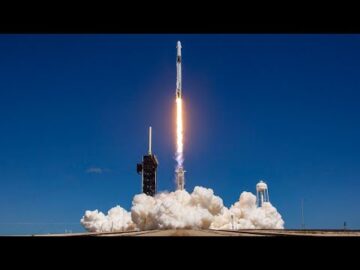New research indicates that tens to hundreds of planet-sized nomadic worlds may populate the spherical volume centered on Earth and circumscribed by Proxima Centauri, and thus may comprise closer interstellar targets than any stellar planetary system. For the first time, there is systematic analysis of the feasibility of exploring these unbounded celestial bodies via deep space missions.
They published several papers and discussed the work at Centauri Dreams. They talk about what propulsion would be needed to reach the nomadic objects when we find them.
Near-future propulsion systems could theoretically enable us to reach nomadic worlds (of radius > R) on a 50-year timescale. Objects with R ∼ 100 km are within the purview of multiple propulsion methods such as electric sails, laser electric propulsion, and solar sails. In contrast, nomadic worlds with R ≳ 1000 km are accessible by laser sails (and perhaps nuclear fusion).






It is fairly challenging to distinguish between interstellar dust and interplanetary dust but we have now captured such dust grains in space for the first time and returned them to Earth.
The existence of interstellar dust is well-known, however, the existence of larger objects has only been hypothesized for a long time. The arrival of 1I/’Oumuamua in 2017 in our solar system changed that. We now know that these larger objects, some of them stranger than anything we have seen, are roaming interstellar space.
We know from gravitational lensing studies that there are gas planet-sized objects flying on their lonely trajectories through the void. Such planets, unbound to a host star, are called rogue planets, free-floating planets, nomads, unbound, or wandering planets. They have been discovered using a technique called gravitational microlensing. Planets have enough gravity to “bend” the light coming from stars in the background, focusing the light, brightening the background star, and enabling the detection even of unbound planets.
~100 km-sized objects have an average distance of about 2000 times the distance between the Sun and the Earth (known to astronomers as the astronomical unit, or AU).
Until now, about two hundred of these planets (we will call them nomadic worlds in the following) have been discovered through microlensing. This is a rough statistical estimate for the average distance, meaning that the ~100 km-sized objects might be discovered much closer or farther away than the estimate.
Brian Wang este un lider gânditor futurist și un popular blogger științific, cu 1 milion de cititori pe lună. Blogul său Nextbigfuture.com este clasat pe locul 1 pe Știrile știrilor. Acoperă multe tehnologii și tendințe perturbatoare, inclusiv spațiu, robotică, inteligență artificială, medicină, biotehnologie anti-îmbătrânire și nanotehnologie.
Cunoscut pentru identificarea tehnologiilor de vârf, el este în prezent co-fondator al unui startup și strângere de fonduri pentru companii cu potențial ridicat în faza incipientă. El este șeful cercetării pentru alocări pentru investiții în tehnologie profundă și un investitor înger la Space Angels.
Vorbitor frecvent la corporații, a fost vorbitor TEDx, vorbitor al Singularity University și invitat la numeroase interviuri pentru radio și podcast-uri. El este deschis vorbirii publice și consilierii angajamentelor.







